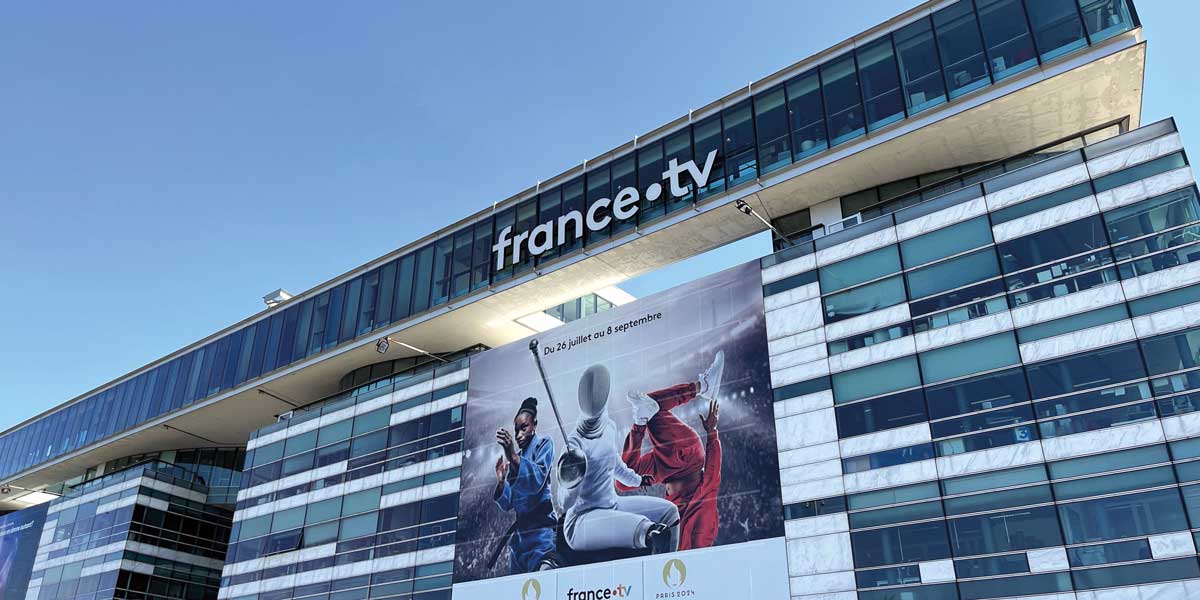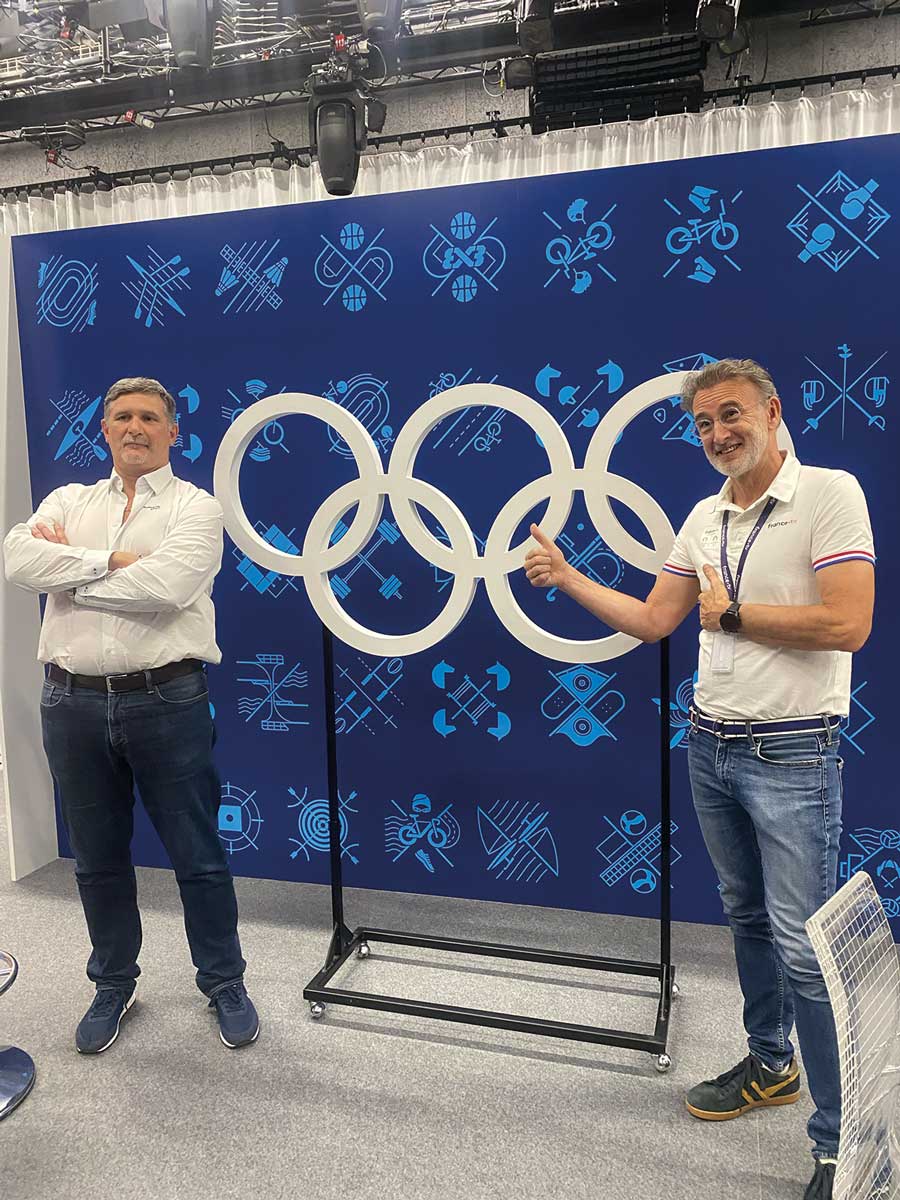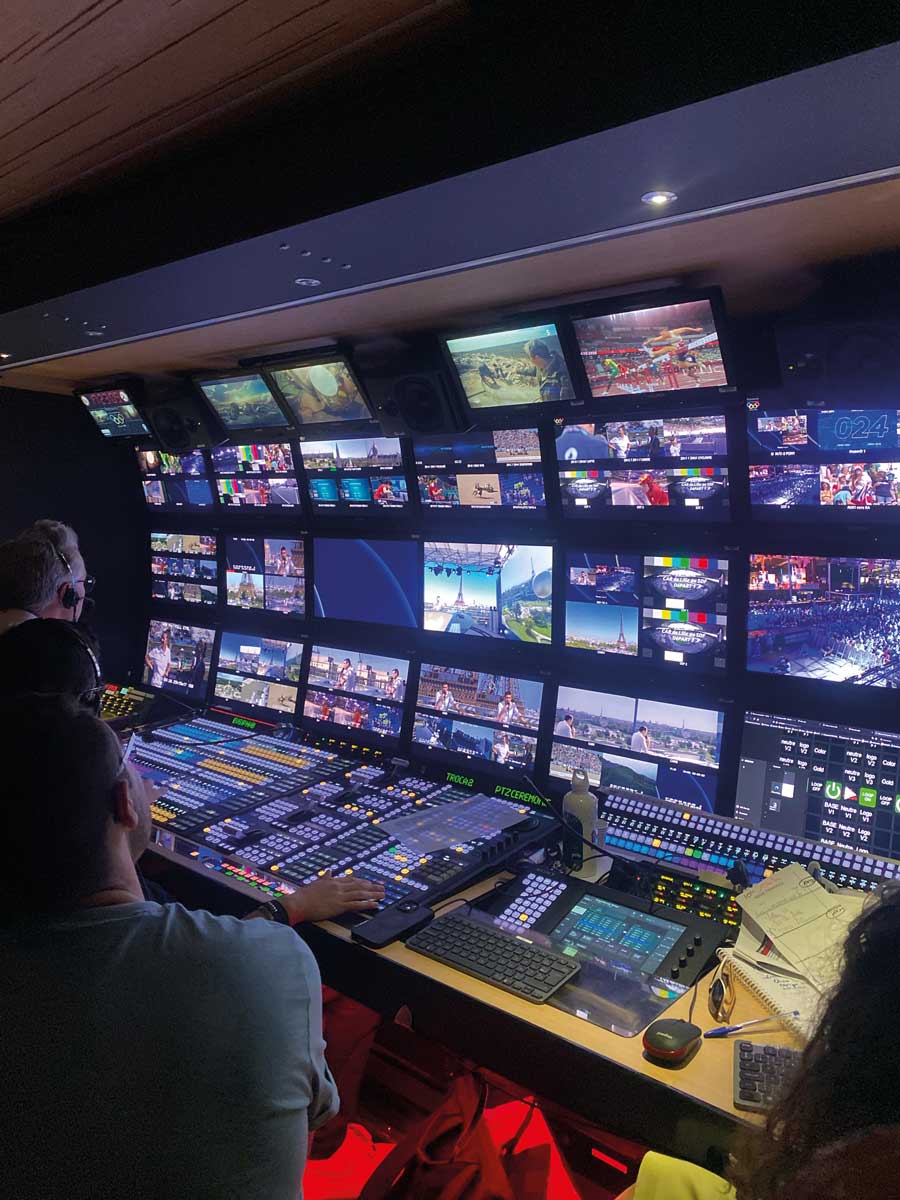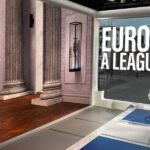Home Olympics, Home Broadcast

Posted on Oct 15, 2024 by FEED Staff
The 2024 Paris Olympics may be over, but its many memorable moments will live on for years to come. We reflect on a site visit to France TV and what we uncovered about the monumental demands of a home Olympics broadcast
Words by Verity Butler
On an idyllic, cloudless August day in Paris, the FEED team joined other members of the press on a visit to France TV HQ, situated beside the River Seine – and not far from the French capital’s iconic Eiffel Tower – in the west of the city.
The reason for the visit was that Belgian live video production expert EVS Broadcast Equipment’s 30th birthday appropriately coincided with this year’s Olympics. What with plenty of its tech in action across the games, it felt there was no better way to celebrate than to show off its slate of live tools hard at work for the host country’s broadcast.
With channels offering more than 50 hours of live viewing every day, France TV was watched by almost 60 million French viewers. Across the two weeks of coverage, the network played a major role, offering a new service on France 2, France 3 and its dedicated online channel: France TV Paris 2024. These provided the perfect stage for all the athletes, medal winners and sporting events.
Fully committed since the Olympic adventure began back in 2019, France TV helped with the run-up to the global event by producing news features and sports programmes. The group also created many special editions and exclusives, such as a concert event one year prior to the games as well as covering the torch’s arrival in Marseille.
A foray into France TV
The visit started with a presentation from France TV’s tech lab director Romuald Rat, who was previously head of news productions.
“It’s been many years we’ve worked with EVS, especially for sports events. We have something like ten OB trucks, all equipped with EVS,” he begins. “We use them for all our main events, like Roland Garros, the Rugby World Cup and the Six Nations. So, every time we have a sports event, we use EVS servers.”
Rat emphasises that France TV HQ’s control rooms are also fully equipped with EVS servers, having renewed contracts with the company last year.
He highlights how France TV decided to record everything on-site using feeds from the IBC, due to the expense of renting space there.
“It’s different this time,” he continues, “because for the first time, we are doing it on our core facilities. When you do an Olympic broadcast in another country, you just build a facility in. That presented a host of new challenges.”
As well as the existing EVS infrastructure at France TV, EVS has also been helping the network with a business-wide transition to IP, with one of the core reasons being to boost its UHD capabilities.
ST 2110 has been a major component in France TV’s steps towards IP. Designed to replace the long-lived SDI used to build TV stations, OB facilities and interconnect for global video networks, SMPTE 2110 is the result of collaboration and years of work across the industry. Its adoption has been widespread, making France TV’s steps towards this goal somewhat inevitable.
“Currently, we have four studio galleries, six or seven studio sets and it’s a nightmare every year when we change the shows that we are doing on different sets, to cross everything. France TV is a huge TV channel, so we have a lot of feeds.
“ST 2110 will help deal with that, bringing us a lot of flexibility in terms of formats, higher resolution – UHD.”
Following this intro, we were led into the traffic room. The wall featured a mosaic of live feeds; hundreds coming from the host of live events, all taking place in different locations, all at once. The traffic room is the first port of call of said feeds, Rat explains, which are then pushed through to the network’s control rooms.
These control rooms were the next tour stop. The atmosphere in these rooms was an intriguing marriage of tension and excitement, with the operators hard at work putting live Olympics content together for the two 24-hour channels.
This was followed by a chat with Fred Gaillard, head of production for the Olympics at France TV. He emphasised one of the biggest challenges faced by the production team: “Coordination. Having to coordinate so many channels. We have all these venues with all these signals, but the challenge is to make three live programmes all at the same time.”
The tour concluded with a step inside the on-site OB truck, also hard at work behind the scenes of the colossal broadcast.
Seine-sational numbers
We’ve heard about the production, but how did the coverage do?
According to data listed by France TV post-games, the average French viewer watched more than 24 hours of Olympics coverage on the France TV network. On top of this, France 2 was the number-one French channel watched during the entire two weeks.
The somewhat damp (both in terms of location and weather conditions) opening ceremony raked in a tidy 23.4 million French viewers, with the closing ceremony jubilantly drawing proceedings to a close with 17.1 million – peaking at 20.6 million.
The channels saw a cumulative audience share of 50.2% and France 2 was the number-one French channel over the whole two weeks.
It also saw a peak of 15 million viewers during Léon Marchand’s fourth gold medal win of the games and 13.9 million viewers during his second. There was a peak of 13.2 million viewers for the French team’s victory in the judo event and 11.8 million viewers for France’s gold medal in Rugby Sevens.
Surfing events were watched by 19.3 million people in mainland France and in overseas departments. On top of this, there were 39 million views for the online channel France TV Paris 2024 throughout the Olympics, with more than 11 million unique visitors.
The live chat, Fanzone, welcomed more than one million participants over the course of the games.
At time of writing, the Paralympics are soon to get underway. France TV’s coverage of the Paralympics, held 28 August to 8 September, will offer 24/7 viewing. With a coverage relay between France 2 and France 3, and full coverage online, viewers will be able to view all of the action without missing a moment.
A total of 4400 high-performance athletes are expected to participate in the Paralympics, with 22 sports, 23 disciplines and 549 events. Para-archery will be held at Les Invalides, blind football matches at the Eiffel Tower, para-judo and wheelchair rugby at the Champ-de-Mars. The Porte de la Chapelle Arena will be used for para-badminton and para-weightlifting, while the Château de Versailles will host the para-equestrian events.

EVS House and Stade de France
To coincide with its 30th birthday, EVS rented out a beautiful Parisian town house located in the heart of the city, dubbed EVS House. It was here where we learnt of the key updates for the future.
The first of these was the announcement of its acquisition of Portugal-based MOG Technologies, with the stated goal of enhancing its content management and distribution solutions, Mediaception and Mediahub.
MOG Technologies is renowned for its expertise in cloud technology. This strengthening of EVS’ cloud-based services aligns perfectly with the evolving expectations of the market, ensuring it stays at the forefront of tech advancements in live and near-live production.
“What’s important here is that [MOG’s] expertise is going to help a lot,” Sébastien Verlaine, head of brand and corporate communications of EVS, explained in his presentation at EVS House.
“When we made the acquisition of Axon, their expertise in infrastructure was very important. Here, we’re looking more in terms of transcoding, facilitating and automating ingest, whether on-premises or in the cloud.”
The second key announcement was that it was now a shareholder in Cuez by start-up Tinkerlist.
Tinkerlist is a leading innovator in media production, having developed Cuez – the world’s first cloud-based rundown management system – as a web application and automation system designed to connect with a wide variety of production devices.
Verlaine continues, “We believe that Tinkerlist is very dynamic, entrepreneurial and innovative. We don’t want to get in its way in terms of innovation, instead wanting it to continue, with our backing, to grow even further.
“This is all while creating synergies so that we can use some of this tech within existing solutions.”
The visit concluded with a spectacular trip to the Stade de France to witness a marvellous morning of athletics. To see the Olympics in the flesh served as a natural conclusion to what we had found during the trip – that Paris 2024’s success served as a symbol of the astounding progress of the broadcast tech industry as a whole.
We look forward to seeing what LA 2028 will bring to the production table in four years’ time!
This feature was first published in the Autumn 2024 issue of FEED.











